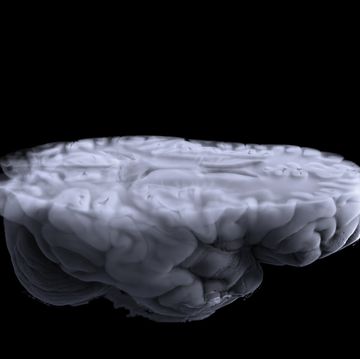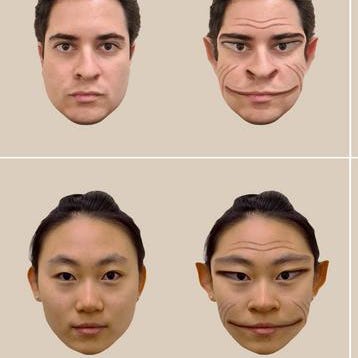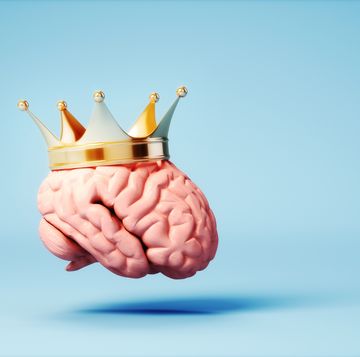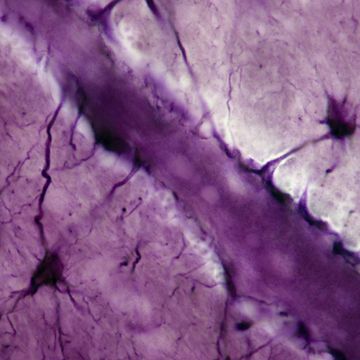Erik Sorto, 32, is paralyzed from the neck down. He is also thinking about giving himself a drink of water for the first time in 10 years. As he pictures using his left arm to lift a cup to his mouth, two tiny silicon chips implanted in his brain receive the unique pattern of brain activity. Outside his head—in an external computer connected to those chips by a wire—a personalized algorithm recognizes that pattern as the imagined movement it is, and a robotic arm grabs the water and brings it to his face.
That water must taste awfully good.
A team of scientists led by Tyson Aflalo and Richard Andersen at California Institute of Technology have glean intention directly from neural activity with implantable chips—and can use robotic limbs to act out those urges. They report on their research with Sorto in a new study out in Science today.
The brain-machine interface
You might have heard about this kind of research before, as the work by Aflalo and Andersen isn't the first time that disabled patients used neural implants that can read their brain signals and used those signals to guide a robotic prosthesis. But Sorto's implanted brain chips are unique. They're not stuck on the part of the brain that scientists know to directly control muscle movement, the primary motor cortex. Instead, they're on the posterior parietal cortex, a higher-level region of the brain that's thought to play a critical role in plotting and planning movements, and even more abstract concepts, like setting goals. In a sense, the chip is not reading the truncated mechanics of Sorto's bodily demands to move limbs. It is parsing his conscious urge to do so.
"This is a kind of new territory," Andersen says, "and we've spent 15 years focusing on this particular part of the brain just to get to this stage."
The devices Andersen and his team implanted in Sorto's brain are specialized devices called multielectrode arrays, or MEA chips. Each MEA chip has roughly 100 electrodes that record (on average) a single neuron, giving researchers a live feed through an tiny window into Sorto's brain. And after months of testing, the research team developed an algorithm that could successfully translate a live feed from this window to a set of Sorto's urges, including moving both arms at various speeds.
To be clear, Sorto is not directly controlling the robotic prosthesis the way you or I move an arm. He's merely giving it a set of rough commands which are interpreted by a computer. And due to the complicated nature of the brain, exactly what part of those commands (such as imagining touching his nose) the MEA chip can pick up is largely a mystery.
But according to Andrew Pruszynski, a neuroscientist at University of Western Ontario who was not involved in the study, this technology may nonetheless be the first baby steps toward an even bigger possibility: Using implantable chips to control benign, everyday computerized tasks, such as deleting emails or turning on your phone.
The barriers
Engineers and scientists certainly have their work cut out for them. According to Pruszynski, there are several major barriers that will likely take decades to overcome before such implantable chips could see any sort of commercial application. The first is that the chips would need to be completely, not just partially, implanted in the skull.
"If you look at other long-term implants like pacemakers, deep brain stimulators, or cochlear implants, you don't have wires leaving the body through the skin [as with these MEA chips], which has a major potential for infection," he says. But this issue is a double challenge. Bioengineers will have to figure out a way to keep the chips powered and to efficiently stream their data to an outside computer.
"Researchers will also need to get a much better handle on exactly how many neurons we really need to track, and where those neurons are," Pruszynski says. For tasks like more easily controlling robotic prosthetic arms, like in Sorto's case, that could require multiple MEA chips placed in different parts of the brain, such as the posterior parietal cortex (where they are now) and the primary motor cortex (which directly controls muscle movement).
As for deleting emails, knowing where to put the chips may require a deeper and more fundamental understanding of how the brain manages intention than we have now.
Pruszynski also believes next-generation MEA chips should have the ability not to just soak up information, but also deliver it via nerve-like electrical impulses. That, too, comes with a whole host of issues, including (but not limited to) the fact that MEA chips have a tendency to slightly move with regard to the squishy, flexible human brain, and that the brain can rewire itself.
Nonetheless, Pruszynski says today's paper makes incredible headway into "understanding the brain, and using that knowledge to create real change for individuals suffering from injuries [such as spine injuries]," he says. "It's a real triumph of basic science."















